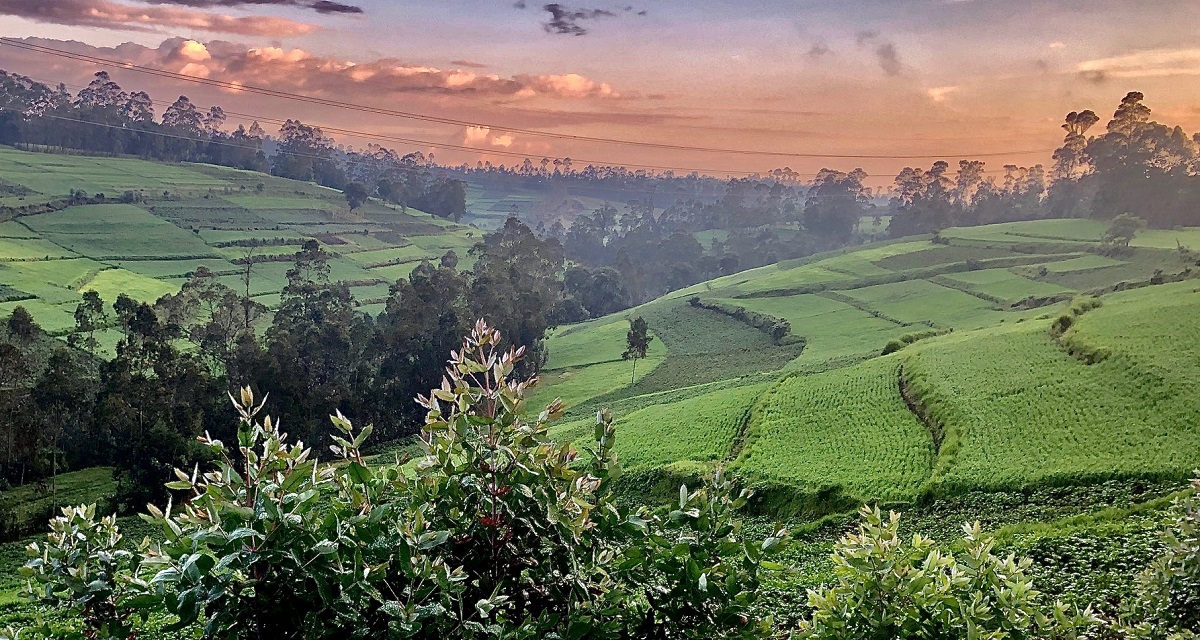
“Eating is an agricultural act” – Wendell Berry, US farmer, poet and philosopher.
Agriculture is fundamental to human prosperity, but it is also in direct competition for space with other land ecosystems. While agriculture is called upon to satisfy the food demands of a large and growing human population, natural ecosystems are large reservoirs of biodiversity and carbon and are the providers of important cultural and aesthetic benefits [1].
Historically, as population and incomes have grown, so has their environmental footprint, and climate change, with its negative impact on agricultural productivity, exacerbates the problem [2]. Current estimates for the contribution of agriculture, forestry and other land uses to global greenhouse gas (GHG) anthropogenic emissions range from 15 to 30% [3] and the amount of carbon locked in forests and soils is enormous [4]. As a consequence, appropriate land use policies are essential to any plan that aims at reducing emissions. However, given that land use is intimately related to food security and that climate change demands long-term planning, addressing the issue is particularly problematic. Land use policies need to be economically and politically sustainable in the long term to be successful. The risk of policies unravelling under budgetary pressure from unfavourable market forces or due to the erosion of political consensus is high, and benefits that accrue slowly – such as the accumulation of soil organic carbon or the restoration of forests – can disappear swiftly with changes in policies. Therefore, policymakers must not only contend with large economic forces but, to ensure continuing political consensus, they must take into account the priorities and preferences of many actors, notably farmers, communities and producers’ organizations.
Researchers have developed analytical tools that allow policy and decision makers to investigate the range of climate-related challenges faced by a country, to explore policy options, and identify potential solutions (see for example the CCAFS resource website [5]). Models offer insights into alternative land use scenarios and inform contingency plans and can also help in identifying climate opportunities – that is, places where climate change will improve conditions for agricultural production given changes in comparative advantage and commodity prices. However, the existence of models alone is not enough to ensure that effective land use policies are devised, and this is particularly true in the global south where issues of capacity and financial resources limit the possibility of effectively using these models. Researchers should therefore remember that their work should have certain characteristics to be useful in the policy-making arena. Models should be adaptable so that they can properly represent localized realities and conditions, open so that it is possible to use alternative datasets and incorporate new information as it becomes available, and transparent so that the necessary trust between researchers and stakeholders is generated.
Second, since a particular landscape is the result of the interaction of many diverse decisionmakers with a wide range of perspectives and preferences, many actors must be engaged to shape its trajectory. Modelling results should therefore be used as a starting point in negotiations among farmers, local communities, the private sector and governmental agencies as they plan climate change actions. Modelling has been used successfully in scenario-building exercises to devise efficient climate policies [6] and to understand locally specific power-driven processes [7], and has fostered a culture of knowledge sharing through the building of communities of practice [8].
Addressing the multiple challenges caused by climate change is a difficult task, and while part of the solution rests, as Wendell Berry suggests, in the things we choose to eat, transforming our current food system into a sustainable, environmentally friendly version of itself will not happen without the active participation of the parties affected. As researchers, beyond the models we love to build, we must be willing to break disciplinary barriers and seek sustained interactions with stakeholders if we want our work to be able to influence climate change policies.
Read the other articles in our COP26 series here.
References
[1] Millennium Ecosystem Assessment (2005). Ecosystems and Human Well-being: Synthesis. Island Press, Washington, DC.
[2] Lobell, D. B., and S. M. Gourdji(2012). “The Influence of Climate Change on Global Crop Productivity.” Plant Physiology 160: 1686–1697.
[3] C. Rosenzweig, C. Mbow, L. G. Barioni, T. G. Benton, M. Herrero, M. Krishnapillai, E. T. Liwenga, P. Pradhan, M. G. Rivera-Ferre, T. Sapkota, F. N. Tubiello, Y. Xu, E. Mencos Contreras, J. Portugal-Pereira, (2020). Climate change responses benefit from a global food system approach. Nature Food 1, 94–97.
[4] IPCC, (2019). Climate Change and Land: an IPCC Special Report on Climate Change, Desertification, Land Degradation, Sustainable Land Management, Food Security, and Greenhouse Gas Fluxes in Terrestrial Ecosystems. Available at: https://www.ipcc.ch/srccl/ [Accessed November 3, 2021].
[5] CCAFS resources website: https://ccafs.cgiar.org/resources/publications
[6] De Pinto, A., Loboguerrero, A.M., Londoño, M., Ovalle Sanabria, K., Suarez Castaño, R. (2018).
Informing climate policy through institutional collaboration: reflections on the preparation of Colombia’s nationally determined contribution
Clim. Pol., 18, pp. 612-626.
[7] Aberman, Noora-Lisa and Birner, Regina and Haglund, Eric and Ngigi, Marther and Ali, Snigdha and Okoba, Barrack and Koné, Daouda and Alemu, Tekie (2015). Understanding the Policy Landscape for Climate Change Adaptation: A Cross-Country Comparison Using the Net-Map Method. IFPRI Discussion Paper 01408, Available at SSRN: http://dx.doi.org/10.2139/ssrn.2564536
[8] Kane, L., & Boulle, M. (2018). ‘This was different’: Transferring climate mitigation knowledge practices south to south with the MAPS programme. Climate Policy, 18(9), 1–12.

